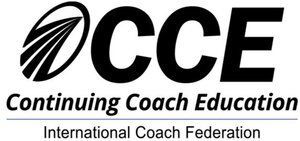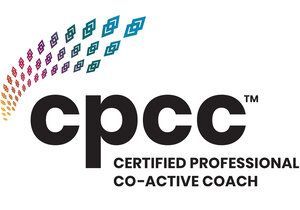Finding Peace and Gratitude Amidst the Hustle: A Path to Inner Harmony for Professionals

In the whirlwind of high-profile careers, it can feel like we're constantly chasing one deadline after another, striving to achieve goals, meet expectations, and juggle responsibilities. It’s a cycle that can leave us feeling stressed, uncentered, and far from the peace we seek. But amidst this fast-paced lifestyle, it's possible to find peace and gratitude, to ground ourselves and reclaim our inner harmony. Let’s explore how we can achieve this balance using insights from yoga and Buddhist teachings.
The Illusion of Control
We often believe that control over our external circumstances will lead to peace. We think, "If only I can finish this project, get this promotion, or manage my team more effectively, then I’ll be happy." But as Sadhguru eloquently puts it in his book Inner Engineering, “Peace and joy are the basis of your life, and not the result of it.” This profound insight shifts our understanding of peace as something not to be chased externally but cultivated internally.
Grounding Ourselves in the Present
Sadhguru reminds us, “The only way to experience life is in the now; the past and future exist only in your mind.” As professionals in high-stakes roles, we often find ourselves living in the future—anticipating problems, planning strategies, and worrying about outcomes. This future-focused mindset keeps us in a constant state of tension.
Grounding ourselves in the present moment, through simple practices like mindful breathing or a few minutes of silent reflection, can reconnect us with a sense of peace.
Consider listening to audio meditation guide at any time of your day. We recommend “White Light Shield Meditation” from InsightTimer;
Link here: https://insighttimer.com/pub5340285/guided-meditations/white-light-shield-of-protection_1
This small act of mindfulness can bring us back to the present, calming the mind and reducing stress and with regular practice, can help to protect our energy and self from the outside noise.
The Power of Gratitude
Gratitude is a powerful tool in the journey towards inner peace. When we focus on what we have rather than what we lack, we shift our mindset from one of scarcity to one of abundance. The Buddha teaches that “gratitude is a direct path to peace.” By appreciating the small joys and blessings in our lives, we cultivate a sense of contentment.
A practical way to incorporate gratitude into your daily routine is by keeping a gratitude journal. Each day, take a few minutes to write down three things you are grateful for. There are many Gratitude Journals available on amazon and our recommendation for you is: The 5-Minute Gratitude Journal.
Try this calm morning routine for 7 days:
Find a calm peaceful spot around your home or find a peaceful spot in the park nearby, a warm cup of herbal tea such as Blue Pea Flower. Take a moment of quiet and peace by sipping your warm herbal and write down in your gratitude journal. This practice not only grounds us but also opens our hearts, making us more resilient to stress.
Why should you consider sipping on Blue Butterfly Pea Ayurvedic Tea instead of coffee?
Clitoria Ternatea or Butterfly Pea Flower, known as Ajaparita or Shankpushpi in India - a herb widely used in Ayurvedic medicine as a brain tonic and memory enhancer. Shankhpushpi has been used for centuries as a means to promote higher intelligence and a more expanded world view. In a more physical sense, the herb can help to eliminate hypertension, anxiety, asthma, stress-related disorders, epilepsy, insomnia, urinary disorders, hyperthyroid disease, constipation, and numerous neurodegenerative diseases including dementia and Alzheimer’s disease. The herb works primarily by supporting the central nervous system.
Embracing Impermanence
One of the core teachings of Buddhism is the concept of impermanence. Thich Nhat Hanh, in his book The Heart of the Buddha’s Teaching, explains, “Thanks to impermanence, everything is possible.” This idea can be liberating, especially for those in high-pressure roles. It reminds us that no matter how overwhelming or stressful a situation may be, it is not permanent. Change is the only constant.
Accepting impermanence allows us to let go of our need for control and perfection. We begin to understand that it’s okay to have moments of stress, but these moments do not define us. By embracing the flow of life, we become more adaptable and less burdened by the ups and downs of our careers.
Creating Sacred Spaces
Creating a sacred space can be a powerful way to find peace. This doesn't have to be a physical space; it can be a few moments in your day dedicated to self-care and reflection. As Sadhguru suggests, setting aside time for yoga, meditation, or simply sitting in silence can create a sanctuary within ourselves.
Imagine starting your day with a few minutes of meditation, focusing on your breath and setting an intention of peace and gratitude. This small ritual can act as a buffer, protecting your inner peace throughout the day. You can also end your day by reflecting on what went well, expressing gratitude for those moments, and letting go of any tension before you sleep.
The Gift of Self-Compassion
Finally, in our quest for peace and gratitude, self-compassion is vital. We are often our harshest critics, especially in high-stakes roles where the pressure to succeed can be immense. Remember, it’s okay to feel stressed, and it’s okay to seek help. Recognizing our humanity and treating ourselves with the same kindness we would offer a friend in need can make a profound difference.
Last few words from us…
Finding peace and gratitude is a journey, not a destination. It’s a practice that we cultivate daily, moment by moment. By integrating mindfulness, gratitude, acceptance of impermanence, and self-compassion into our lives, we can navigate the demands of high-profile careers with a sense of inner calm and joy. As we make peace and gratitude a priority, we not only improve our well-being but also enhance our ability to lead and inspire others.
Remember, the greatest gift you can offer yourself, and the world, is your own inner peace. As Sadhguru says, “If your interiority is such that you are in a beautiful state of experience, everything around you will be naturally enhanced.” Let peace and gratitude be your compass, guiding you to a more centred, grounded, and fulfilling life.
Peace & Light,
__________________________
Start your path in finding inner peace and harmony with us this September!










